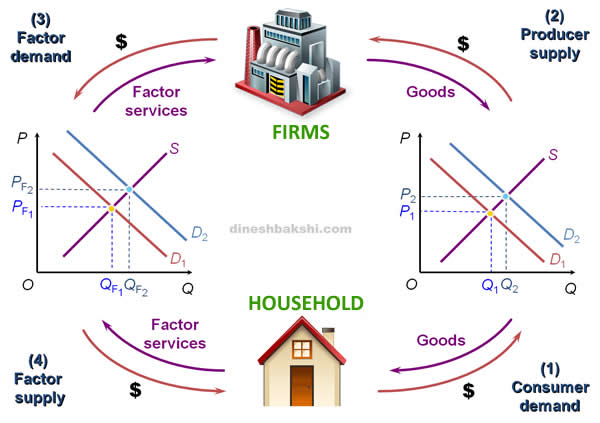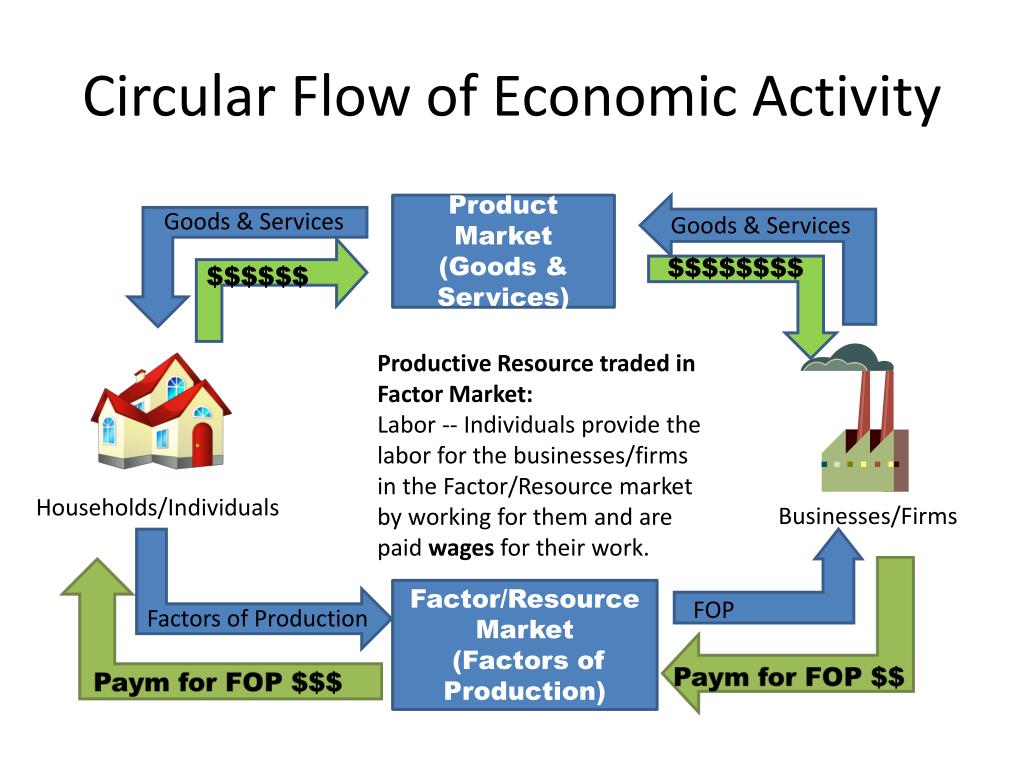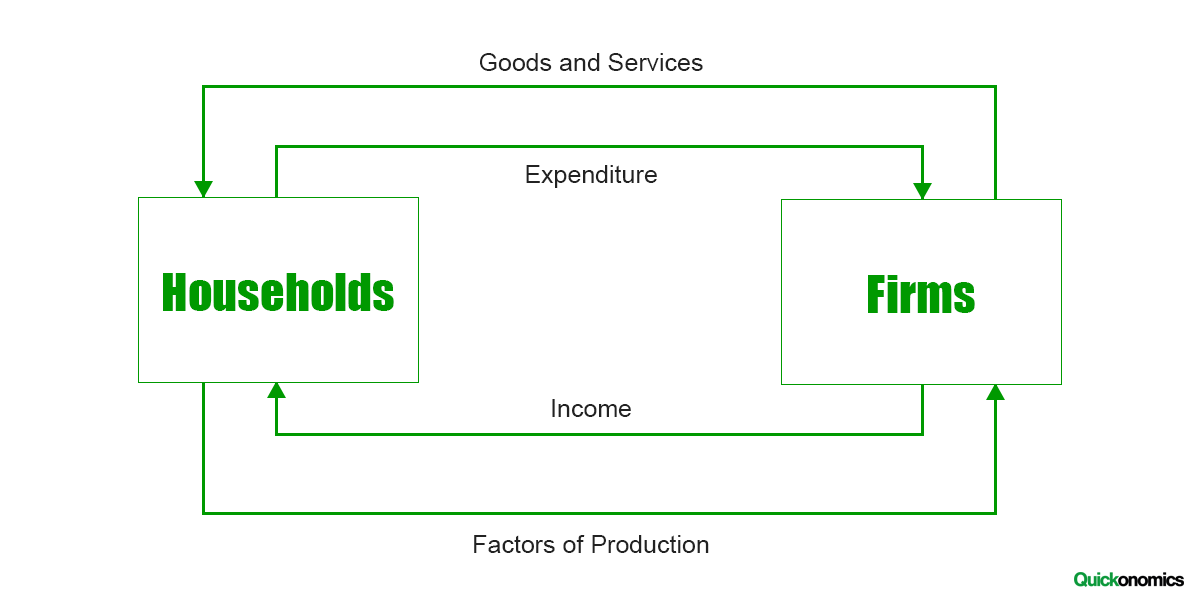
François Quesnay developed and visualized this concept in the so-called Tableau économique. The idea of the circular flow was already present in the work of Richard Cantillon. The circular flow analysis is the basis of national accounts and hence of macroeconomics. The flows of money and goods exchanged in a closed circuit correspond in value, but run in the opposite direction. The circular flow of income or circular flow is a model of the economy in which the major exchanges are represented as flows of money, goods and services, etc. The functioning of the free-market economic system is represented with firms and households and interaction back and forth. Basic diagram of the circular flow of income. Money flows in the opposite direction from goods and services. The flow of money is shown with purple, and the flow of goods and services is shown with orange.

This graph shows the circular flow of income in a five-sector economy. The circular flow just serves similar purposes and makes teaching as well as learning easier.Not to be confused with Circular economy. You can compare it to other tools, for example when I was studying math and we were covering topology our professor would bring us examples of Klein bottle, 3D printed tesseract and other 'cutsy toys' - ultimately they were literary just cool looking paperweights but I found them useful when learning topology and I am sure other students did as well. I would also not say it has any less significance than water cycle which is again mostly just teaching/visualization tool. In most fields you will find that there are tools that outside classroom have no much use yet I would argue thats enough significance in itself. The tool does not get included in textbook because professors mindlessly copy it but because its genuinely useful classroom device.Īrguably the circular flow does not have much use outside classroom or self-study, but that does not mean that it is not a useful or significant tool as it helps students who's math skills might not be yet ready for mathematical presentation understand important concepts in macroeconomics. You can also describe water cycle in terms of physical processes in a mathematical model and you can do the same with circular flow which is ultimately based on the national income identity and related macro general equilibrium models but that might be too intimidating for highschool/undergraduate 101 students. In a sense yes (except for the mindless part) because circular flow is just a didactic tool - you compare it to a water cycle and thats actually a good comparison. Thoughts: It seems to me that these circular flow diagrams are just some cutesy device that some textbook writer long ago first came up with, and which other textbook writers have simply and mindlessly stuck with.
#GDP CIRCULAR FLOW DIAGRAM HOW TO#
The circular flow also is a good and easy way how to introduce 101 econ students to the idea that in macroeconomics income is endogenous, I seen it also be used as illustration of how money multiplier works. The point of these is to provide birds eye view of the economy, to show students that in economics everything is interconnected (and you would be amazed by how many people do not realize that), and also it also highlights the specific interactions that occur between different sectors of an economy.

A more involved versions of circular flow diagram as for example the one taken from Krugman's macro textbook that you can find below the text also include financial markets (where people can save), government, international sector and so on. However, besides that it has many other uses as well as it is an easy way of provide a bird’s eye view of all important flows in the economy.Īlso you cant judge a tool only based on its most simplified version. In this case it equates it to consumption but that is not generally true of all circular flow diagrams.


As you pointed out the diagram is used to illustrate that Production (or more appropriately output) = Income.


 0 kommentar(er)
0 kommentar(er)
